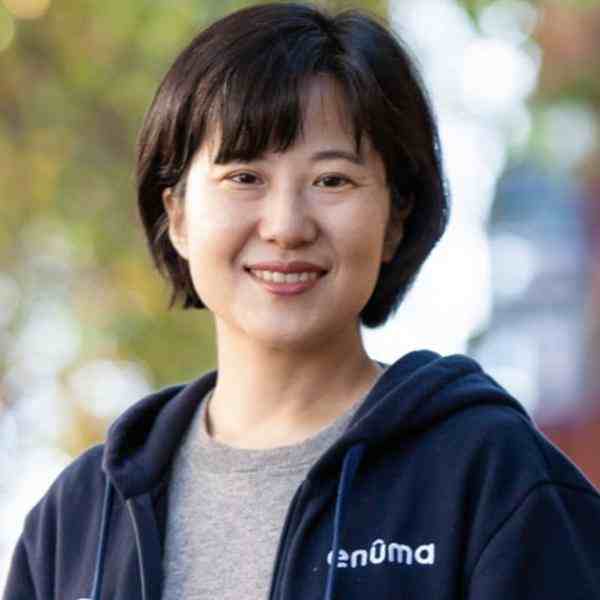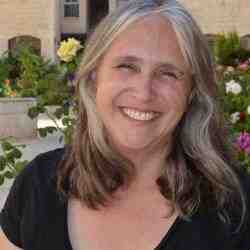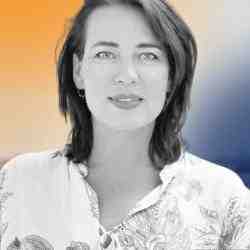Introduction
Sooinn is changing the paradigm of basic education, through child-centered learning.
The New Idea
If appropriate education is provided, children between ages 5 through 9 have no reason to fail learning. Sooinn was working at a computer game company when she became aware of the concept of light gamers; users who are slower in picking up the mechanics of the game and eventually quit. The key to keeping light gamers enjoy the game is not to change the playthrough speed, but to allow various versions of the gameplay that allows the light gamer to practice. Sooinn took this idea and applied it to children with learning disabilities. It was her insight that a new blueprint for education is required to keep the learner curious and motivated, designed from a young learner's point of view to assure that children facing learning delays do not give up. In the existing education system, it was assumed that the needs of children with learning disabilities would be best addressed through reduced progression speed, such as by reducing learning materials or by reiterating the same materials multiple times. Yet regardless of learning or developmental disabilities, and also irrelevant of the severity of such disabilities, all children lose interest in learning and even become resistant to learning when progress is slowed. Injini is a cognitive therapy app developed with that insight, and its success and its amazing support from parents with children with disabilities is a testimony to how much we needed a new approach to education.
Every year since its launch, Injini generated annual sales of about $300,000, making it NCSOFT(Korea's leading game developer)'s highest-grossing mobile game app for first three years. Sooinn pioneered the digital special education market, proved its viability, and founded Enuma to work on her own vision. Enuma is a trailblazer in the mobile education market with the world's best engineers, graphic designers and researchers. Despite the dominant position in the industry, she aspires for something greater. She wants more enterprises to enter the education content market, create competition, and raise the standard in terms of content quality. To achieve that goal, Sooinn is bringing down barriers between industries so talented software engineers can participate in solving education's problems, ultimately causing an inflow of innovative contents into the education system.
Sooinn's ultimate vision is to create a world where every child is an empowered, independent learner. She is in fact, targeting all margins of the education market where children have been marginalized, not only due to disabilities, but also geographic, social, and cultural constraints. Sooinn sets specific targets when collaborating with local NGOs, local developers, regional government offices, foundations, and international organizations. Examples are Chinese farmers' children who cannot register in schools because they have no birth record, children in refugee camps in Sudan and Syria, and young girls in the Middle East who are prohibited from going to school.
The Problem
High-quality digital education contents for children with vulnerabilities in learning were few and far between because it did not guarantee sufficient returns. From the perspective of large corporations such as Microsoft and Pearson, investing into the development of educational content for such a narrow market segment for children with developmental or learning disabilities was not a very attractive prospect. Because the market was very limited in size and profitability, products were wanting in many aspects. Furthermore, due to the nature of the infant special education market, similarly to how orphanages face a vicious cycle of falling behind, low-quality goods remained on the market for a long time. For example, of the 80 enterprises on the New Schools Venture Fund investment portfolio, less than 5 enterprises were dealing with special-needs education. As such, commitment to the quality of educational software has been focused elsewhere; away from children's learning and developmental disabilities and toward higher education such as for employment and university entrance exams.
From the software developers' perspective, special-needs education market is saturated with old ideas. They mostly read the problem slowly and repeat materials in an uninteresting way. Developers are constantly identifying and analyzing what causes user frustration, because they value the user experience, but in the special education industry, the educators did not pinpoint where the learners were being frustrated, resulting in the practice of ineffective solutions offered at a high price. It was obvious to all that this was the problem, but parents had to bite the bullet and use the old and ineffective education packages. Talented software specialists capable of breaking this status quo are usually where the money is: the game industry. Nonprofit organizations outsource their educational software, and in some cases, make-do with non-expert programmers.
Digital education is not an end-all solution. If structural problems are not addressed first, education practices based on digital platforms will face greater catastrophe. That is to say, the education system needs to change from being teacher-oriented to being a learner-oriented system. Digital education has made advancements for about three decades ever since widespread personal computing became a reality. The problem is that books were replaced by the monitor, and education is still supplier-centric. For instance, the tablet-textbooks that the Korean government invested in for 4 years beginning in 2008 ultimately disappeared from classrooms because everything about it was organized for the teacher to have better control over the class. Examples of this would be requests to "prevent children from doing anything else, and keep them on the same screen", or "please put it page numbers on the screen ". If we cannot change the supplier-based education system, even with our available digital tools capable of connecting materials and functions to learner needs, children facing difficulty learning will continue falling behind. Early childhood is a crucial time for developing cognitive and learning abilities, and requires adequate care and intervention if necessary. Despite this importance, children with learning disabilities who enter the standardized curriculum of public education, their willingness to learn becomes enervated. To address that problem, Sooinn set out to transform education towards learner-centered orientation. As a means to that goal, she is creating new collaborative processes involving software developers, open-source strategy, local engineers, and NGOs to give new stimulus to the education-technology industry that benefits all.
The Strategy
Sooinn has teamed up with global talents to develop high-quality education contents at affordable prices, offering them through mobile apps. In order to grow Enuma into a market-changing IT company like Google and Facebook, she has made it for-profit, and has brought in top programmers and engineers. As digital technology is already playing a bigger role in education than ever before, Sooinn hopes to see that when digital-based education becomes standard practice around the world, so would Enuma's education model for the learning-disabled and their perpetual reinvestment into quality. Enuma currently employs 20 team members and has offices in Berkeley, Seoul, and Beijing. Employees are qualified M.A.s in education, with former teachers, and special-needs teachers, working together to develop a curriculum based on early childhood brain and cognitive science and cognitive neuroscience. Six engineers work on 13 development teams, and with a server system benchmarking game industry's best-in-class server system standards, the system is sturdy enough with scalable up to a million users.
Basic education provided in public schools is designed with the average child learner in mind; within standard distribution in terms of academic ability. The problem, but the issue of students outside standard deviation, those with learning-capacities lower on the bell curve during early childhood and elementary education have not been taken seriously. Sooinn has worked to eliminate obstacles from the perspective of the learning-disabled children, so not a single child is left behind from a fair opportunity for basic education. The numericity of those learning-disabled children and the severity of the challenges they face have been underestimated. Developmental disability is measured on a spectrum, determined on a relative basis. 2% of the Korean population has it, while 14% in the United States and 21% in the United Kingdom. Sooinn found that the children who show borderline scores in academic abilities are not given an opportunity for special-needs education, and that they are likely to fall further behind. According to American School Board Journal (2006), 40% of American students enrolled in public schools have a scholastic deviation of 1-3 years to their own peers in the classroom. Children in African rural areas are often slower to recognize the concept of signs, which shows that cognitive abilities are affected by environment. So Enuma designs basic education content with all possibilities open, without the bias that I children would already know certain things.
Enuma adheres to three primary principles when designing educational apps. (1) Design with the disabled child in mind, (2) Design as a game that allows for plentiful successes, and (3) Design the curriculum so the materials for the 5 through 9 group is not segmented, but rather integrated. Sooinn shares that children can be immersed in playing Angry Birds for two hours, while unable to focus on their math homework for more than 4 minutes. She found that best results came when children learned as if they were playing a game. The apps developed by Enuma maintains the learner's internal motivation by not marking errors in red, and providing the learner as much time as needed, and ensures that the learner progresses to the next stage through a success experience. As a result, regardless of the educational gap within the classroom, the fast-learning child and the delayed-learning child can progress at their own pace. This helps to eliminate the sense of shame that children experience while facing learning difficulties in the classroom.
Based on the principles, Enuma created TodoEveryone Math (2012) and KitkitThink Open School (Fall, 2016). Todo Math is a basic education app for learning addition and subtraction that launched on the Apple App Store and the Google Play Store. It has about 3 million users in North Americas and East Asia, mostly parents, pre-schools, and primary school teachers. One-year subscription to Todo Math is $34.99. In 2016, the app revenue was $523,000. Kitkit Open School is a basic education app for basic literacy and mathematics for learners between infant-early elementary grades. It is designed for children in underdeveloped countries who do not have access to quality education. The intention is to service Kitkit Open School around the world at low cost or even free, through cross-subsidization with Todo Math's profits. For that purpose, Enuma proposes funding from the government and international development funds.
Enuma is planning to distribute open-source education software for all children around the world experiencing difficulty learning. From technology to design, accessibility and usability, top-quality considerations are made to meet the needs of the learners. The first step is to offer the full and completed Kitkit Open School as open source, for free. It breaks the complacent yet common attitude that "school software doesn't need to be cutting edge; the version tailored to be distributed in Africa can follow more lenient standards; appropriate technology is good enough for education software", and so on. Enuma aims to create top quality software use throughout the education sector, and has brought in top developers with experience creating games played by 200 million users around the world. Open-sourcing high-quality basic education software and building a community surrounding it is a bona-fide invitation to changemaker developers and designers worldwide. In order to empower local developers, Enuma made their source code available in Apache License , allowing third-party use of the code for commercial apps and development of profit models.
Sooinn firmly believes in localization for maximizing the impact of software; contents need to change according country, situation, and environment. Sooinn is planning to build a global open-source community so that the software, like a living organism, evolve and adapt to new social contexts and technologies. when a finished product is released open source, it follows one of the two following localization processes: (1) Local development teams are given full autonomy over the open source. (2) Enuma collaborates with the education activists, education organizations, government offices, and funders locally. In either case, Enuma's role is to create a flexible and scalable architecture that allows rapid localization. Kitkit Open School will promptly answer the needs that arise in rebuilding local public education, and through partnerships with NGOs and government offices, build and utilize architecture models. To test usability in Tanzania, Enuma collaborated with the Korean government and an international relief organization, and successfully demonstrate the effectiveness and feasibility of improving learning capacity in participants. Enuma has secured funding to deploy Kitkit Open School in East Africa Moving onward, Enuma plans to continue building information systems, collect and manage data, and develop means to optimize learning in basic education.
The Person
Sooinn's father was a successful self-made entrepreneur who found opportunities from failures. In her teens, she found school boring, and enjoyed reading books and letting her imagination roam. She attended art high school, then majored sculpture at Seoul National University. In 1997, Sooinn joined a game company as its third employee and launched her career. From the late 90s when the game industry was just emerging, Sooinn's presence was already notable. At the time, there was no systematic methodology for game planning. To remedy this problem, Sooinn organized a study group to translate texts on game theory into Korean, setting standards and establishing basic concepts. She believed that such efforts would attract capable individuals to the game industry. She published a series of cartoons on her blog depicting the daily lives of employees at the game company. Her blog became most popular blog of 2004 and 2005, and she later published those comics as a book which became a bestseller. Sooinn joined NCSOFT as a game designer, a company widely recognized for Lineage, a highly successful MMORPG. She worked with strategy team, where she took part in the development of games for mature audiences, budgeted at $60-90 million, and witnessed the steep growth of the Korean game industry into a $9 billion market.
Sooinn moved the United States in 2008 when her husband went the University of California Berkley for his Ph.D. in computer engineering. The same year, she gave birth to their first child in San Francisco. Born a whole month premature, the infant was in the incubator when the doctors told the couple that "the baby has several disabilities, including autism, and may experience learning disabilities.". Surprised and shaken, the new parents asked the doctors in charge what specific difficulties the child would likely face, asking for case studies with similar diagnoses, but the doctors struggled to produce much substance, despite looking through the library. Fortunately, the determined wife and husband used the Google Scholar service and successfully found 16 such cases in just a few days. As the realization of their son's future dawned on them, they became devastated. But when the doctor heard that they were both game developers, he encouraged them saying, "well, then there is much that needs to be done for children such as yours!" That comment became a turning point in their lives. So Sooinn visited hospitals as part of her research into her son's cognitive treatment, and tried some of materials for autistic children. Although learning-disabled children are slower learners and require "reiterative yet engaging program of high quality", Sooinn found that the children in need were given haphazard and outdated programs. That was how she came to set her mind on developing educational software for children with learning disabilities.
In 2012, Sooinn founded Enuma with her husband, who served as its Chief Technology Officer. Enuma is headquartered in San Francisco with offices in Seoul and Beijing. On the commercial front, Enuma's leading product Todo Math was recognized its outstanding quality, being the runner up for the Best Children's Education Solution at the 2015 Parents' Choice Gold Award and the 2016 SIIA CODiE Award. It is available in 10 languages, and ranks #1 in the Special Education category in 21 countries. On the nonprofit front, Sooinn is collaborating with the UNESCO, Good Neighbors and KOICA. Presently, Enuma entered the Global Learning XPRIZE competition (prize money is $15 million, for open-source teams to create an education app, thereby solving inequality of children's basic education) with Kitkit Open School, and is currently a semi-finalist preparing for the final stage.

 Tile image
Tile image


